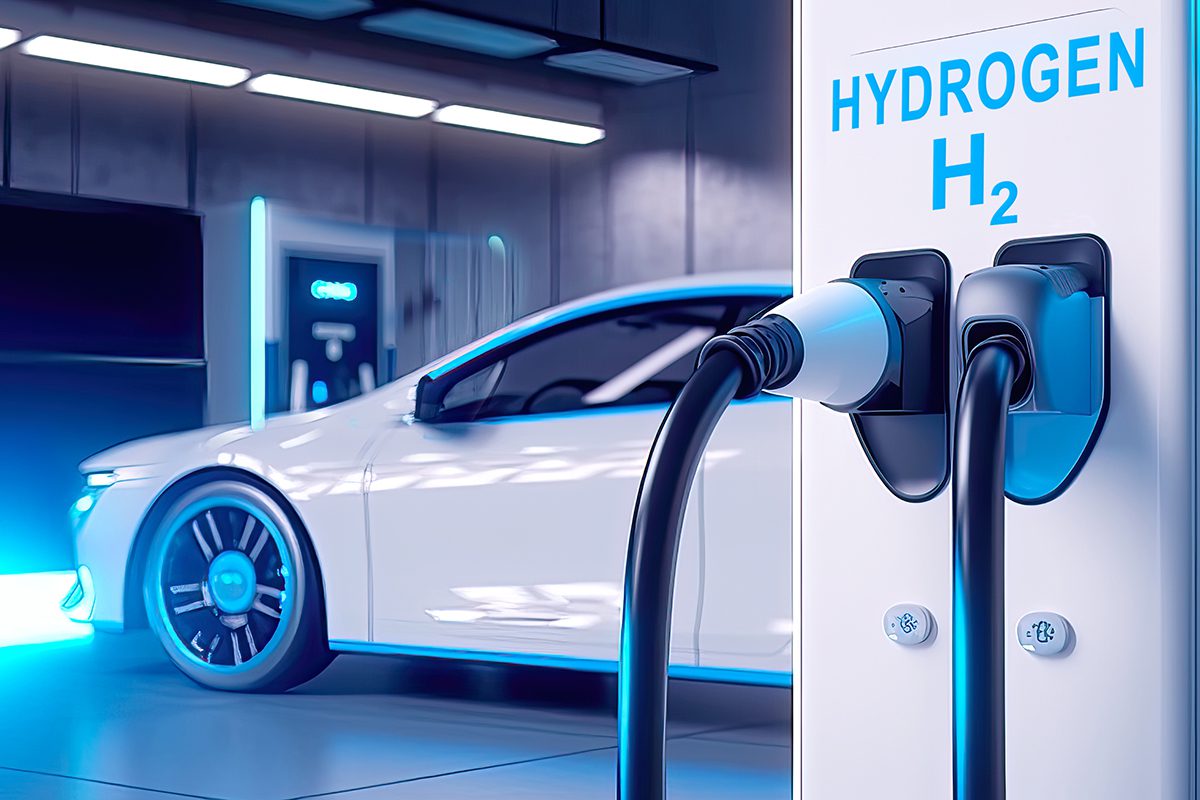The Use of Hydrogen in Optical Fibers

Introduction
Optical fibers are among the most innovative and essential technologies in modern communications and telecommunications. As advancements continue across various fields, one of the complex yet highly practical methods for improving optical fiber performance is the integration of hydrogen. Hydrogen plays a crucial role in enhancing the optical, mechanical, and chemical properties of optical fibers, making them more efficient for high-speed data transmission and long-distance communication.
The Role of Hydrogen in Optical Fiber Production
Why is Hydrogen Used in Optical Fiber Manufacturing?
Hydrogen is used extensively in the optical fiber manufacturing process, particularly in techniques such as Chemical Vapor Deposition (CVD) and Modified Chemical Vapor Deposition (MCVD). In these processes, silicate and other raw materials are introduced into a glass tube in gaseous form. Hydrogen acts as a highly effective reducing agent, removing oxides and metallic impurities, which leads to:
- Reduced optical loss by eliminating light-scattering contaminants.
- Enhanced fiber transparency due to improved purity.
- Improved structural integrity by stabilizing the silica matrix.
In essence, hydrogen reacts with metal oxides, transforming them into inactive, volatile compounds, thereby increasing the refractive index uniformity and minimizing light absorption losses.
Methods of Hydrogen Injection in Optical Fibers
Hydrogen injection occurs through various methods during the fiber manufacturing process:
- MCVD Method: Hydrogen gas is introduced at high temperatures to form ultra-pure, stable optical layers.
- Outside Vapor Deposition (OVD) & Vapor-Phase Axial Deposition (VAD): These techniques use hydrogen to create ultra-thin glass films, reducing contamination and improving transmission efficiency.
Impact of Hydrogen on Optical Fiber Performance
Reduction of Impurities in the Production Process
Hydrogen significantly reduces the presence of carbon, oxygen, and nitrogen in the fiber material, ensuring a more uniform and defect-free glass structure. This leads to:
- Lower attenuation losses, allowing for longer transmission distances.
- Higher data transfer speeds and enhanced network reliability.
Minimizing Optical Absorption at Specific Wavelengths
Hydroxyl (OH) groups in optical fibers can cause light absorption at wavelengths such as 1300 nm and 1400 nm, critical for telecommunications. Hydrogen reacts with these groups, reducing absorption and improving signal transmission—an essential feature for high-bandwidth and long-haul fiber-optic networks.
Enhancing Optical Fiber Lifespan and Durability
Hydrogen minimizes oxidation and thermal degradation in silica glass, making fibers:
- More resistant to extreme temperatures.
- Suitable for industrial, military, and aerospace applications where environmental stresses are high.
Challenges in Using Hydrogen for Optical Fibers
Potential Adverse Reactions with Metals
Despite its benefits, hydrogen can react with aluminum and titanium, forming unwanted compounds that:
- Reduce fiber strength and durability.
- Increase signal loss over time.
Mechanical Impact on Fibers
Excess hydrogen exposure may weaken fiber tensile strength, which can be a concern for underground and aerospace applications where fibers are exposed to mechanical stress.
Solutions for Hydrogen Control in Optical Fiber Production
To mitigate these effects, manufacturers:
- Precisely control hydrogen injection pressure and temperature.
- Utilize hydrogen-resistant coatings to protect fiber integrity.
Advanced Applications of Hydrogen-Enhanced Optical Fibers
Telecommunication and Data Transmission
Hydrogen-enhanced optical fibers are used in:
- 5G networks to reduce signal loss and improve bandwidth.
- Undersea communication cables for long-distance data transmission.
Optical Sensors in Medical, Industrial, and Aerospace Applications
Due to their improved transparency and stability, these fibers are essential in:
- Medical imaging and diagnostics.
- Industrial sensors for detecting pressure, temperature, and humidity.
- Aerospace communications, where durability under extreme conditions is crucial.
Military and Secure Communications
These fibers are preferred for:
- Secure military communications with high resistance to electromagnetic interference.
- Surveillance and tracking systems, offering high-performance data transmission.
Future Prospects for Hydrogen in Optical Fibers
Technological Innovations in Hydrogen Utilization
Advances in nanotechnology and materials science will enable:
- Lossless optical fibers for next-generation networks.
- Temperature-resistant fibers for high-performance applications.
Breakthroughs in Hydrogen Research
Recent research explores:
- Multi-functional optical fibers with integrated sensing and data transmission.
- Nanomaterial-based coatings for hydrogen stability and enhanced performance.
Environmental and Economic Considerations
Hydrogen’s role as a clean energy source can make fiber manufacturing more sustainable. However, the costs of large-scale hydrogen production and storage remain a key economic challenge.
Sources & Further Reading
- Corning Inc. - Hydrogen Aging in Optical Fibers: https://www.corning.com
- Fibercore - Hydrogen Resistance in Optical Fibers: https://fibercore.humaneticsgroup.com
- SPIE Digital Library - Hydrogen-Induced Optical Losses: https://www.spiedigitallibrary.org
Related Articles

Hydrogen and Global Policies: Challenges and Opportunities
Hydrogen, the most abundant element in the universe, has long been used in industrial processes and energy production. However, in recent decades, its role in the global transition to sustainable energy systems has become more prominent.

Introduction to Hydrogen Vehicles and How They Work
Since the invention of the first automobiles, vehicles have evolved into highly advanced machines.

The History of Hydrogen Discovery and Development
Hydrogen, the most abundant element in the universe, has played a crucial role in scientific advancements and industrial applications. From its initial discovery in the 18th century to its modern use in energy and aerospace, hydrogen has transformed various industries and continues to be at the forefront of clean energy solutions.
